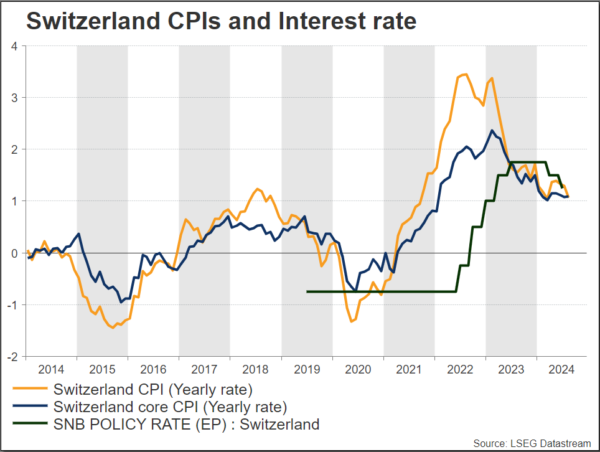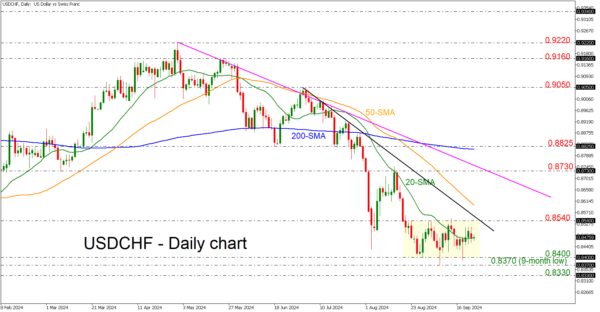- SNB policy meeting has 50-50 chances for 25bps versus 50bps rate cut
- Potential reaction in Swissy on Thursday at 7:30 GMT
SNB: another bank to cut rates
The time for Swiss National Bank (SNB) to cut rates again has come. The global economic environment is currently facing substantial problems, including inflationary pressures and geopolitical uncertainty, so this decision comes at a vital time when the landscape is facing these challenges.
The policy rate of the SNB is currently set at 1.25% since June 2024. There is a 50-50 chance of a 25bps cut versus a 50bps cut at this meeting. Switzerland’s economy, one of the world’s most stable economies, has struggled with moderate inflation and a strong Swiss currency, both of which have an influence on the export-driven sectors of the economy. The major responsibility of the SNB is to maintain price stability while simultaneously fostering economic expansion.
Inflation starts to ease
The goal of the SNB is to maintain inflation within a predetermined range. Recent data suggests that inflationary pressures are beginning to ease, which opens the door for the possibility of a reduction in interest rates. It has the potential to boost borrowing and investment by lowering interest rates, which can lead to increased economic growth. This is particularly significant in light of the fact that Switzerland is currently navigating the post-pandemic recovery phase. The current state of the global economy, which includes the policies of other major central banks such as the Federal Reserve and the European Central Bank, will also impact the SNB’s decisions.
Lower interest rates could result in a devaluation of the Swiss franc, which would make Swiss exports more competitive on the international market. A reduction in interest rates would lower the costs of borrowing money for both individuals and businesses, which might potentially lead to an increase in spending and investment.
Technical look at USDCHF
The Swissy has been stuck within a sideways channel over the last month, with the upper boundary at the 0.8540 resistance and the lower boundary at the 0.8400 support. If there are steeper declines, it may take USDCHF time to test the previous lows of 0.8400 and the nine-month trough of 0.8370. On the other hand, a break of the narrow range could add some optimism for an upside recovery, meeting the short-term trend line at 0.8580 and the 50-day simple moving average (SMA) at 0.8600.
The short- and medium-term outlooks remain bearish as long as the market holds well beneath the 200-day SMA.













